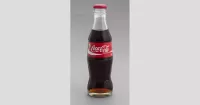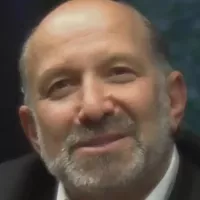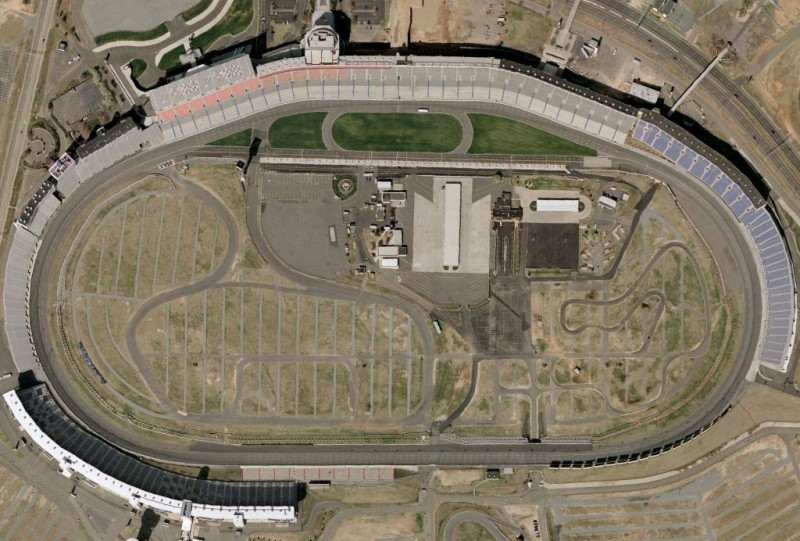Charlotte Motor Speedway is a 1.5-mile quad-oval racetrack located in Concord, North Carolina. Owned by Speedway Motorsports, LLC, and managed by Greg Walter, it has been a prominent venue for motorsports since 1960. The speedway hosts major races across various racing series, including NASCAR, IndyCar, and IMSA. It's accessible via U.S. Route 29 and is a significant landmark in the motorsports world.
1955: Tax Evasion
In 1955 Bruton Smith failed to file his tax returns.
1956: Tax Evasion
In 1956 Bruton Smith failed to file his tax returns.
1956: Smith partners with Propst
In 1956, Bruton Smith partnered with John William Propst Jr. to pursue building a racetrack.
1958: Propst Withdraws; Turner Declines Partnership
In 1958, John William Propst Jr. withdrew from his partnership with Bruton Smith due to a heart attack, and Curtis Turner declined Smith's partnership offer.
April 22, 1959: Smith Announces Speedway Plans
On April 22, 1959, Bruton Smith announced his intention to build his own speedway on the same day Curtis Turner announced his track plans.
July 28, 1959: Groundbreaking Begins
On July 28, 1959, the groundbreaking on the facility began, two months later than planned due to legal issues surrounding the land purchase.
December 1959: Additional Stocks Made Available
In December 1959, additional stocks were made available to continue funding the speedway's construction.
March 1960: Construction Setbacks
In March 1960, construction faced further setbacks due to three snowstorms.
April 1960: Stocks Made Available
In April 1960, additional stocks were made available to continue funding the speedway's construction.
June 15, 1960: CMS Opens for Practice
On June 15, 1960, CMS officially opened to cars for a practice session, but the track's asphalt surface developed holes.
1960: Inaugural Season
In 1960, Charlotte Motor Speedway held its inaugural season of racing.
1960: Construction Dispute
In 1960, a contract dispute arose between Flowe and his workers, halting construction just days before the World 600.
1960: Inaugural Bank of America 500
In 1960, the Bank of America 500, a 500 miles (800 km) race, was first run in October at Charlotte Motor Speedway.
1960: Introduction of the Coca-Cola 600
In 1960, the Coca-Cola 600 (originally known as the World 600) was introduced and quickly became one of the longest, most prestigious, and highest-paying motor races in the world.
January 1961: Lawsuits Filed
In January 1961, two more lawsuits were filed by excavating companies against Charlotte Motor Speedway.
February 1961: NFL Exhibition Game Deal Falls Through
In February 1961, a deal for Charlotte Motor Speedway to host an NFL exhibition game between the Washington Redskins and the Philadelphia Eagles fell through due to unreasonable terms from Redskins owner George Preston Marshall.
March 1, 1961: Lawsuit Filed Against Track
On March 1, 1961, Flowe filed a civil lawsuit against Charlotte Motor Speedway, alleging breach of contract and seeking $138,155.28 in reparations for construction costs.
January 1962: No progress made; Liquidation threatened.
In early January 1962, with no progress made in resolving the financial issues, Judge Craven threatened liquidation of Charlotte Motor Speedway by March if a viable plan was not presented.
January 3, 1963: Reorganization Plan Approved
On January 3, 1963, Robinson's proposal to allow stockholders and creditors to vote on a reorganization plan, was approved.
December 1963: Stock Dividend Announced
In December 1963, Goines announced a 10% stock dividend.
February 1964: First Profit Reported
In February 1964, CMS reported its first profit.
July 2, 1964: Death of Fireball Roberts
On July 2, 1964, veteran driver Fireball Roberts died from complications following a fiery crash at the 1964 World 600.
October 17, 1965: Death of Harold Kite
On October 17, 1965, Harold Kite was killed in a crash during the first lap of the 1965 National 400.
1965: Rightway Investment Corporation Acquired
In 1965, track officials diversified their holdings by acquiring the Rightway Investment Corporation, an insurance finance company.
1966: Race Distance Increased
In 1966, the distance of the Bank of America 500 race was increased to 501 miles (806 km).
1970: Plans for Road Course and Grandstands Announced
In 1970, management announced plans to construct a new road course and additional grandstands.
1970: Winston sponsors NASCAR Cup Series
In 1970, the R. J. Reynolds Tobacco Company and its subsidiary Winston began sponsoring the NASCAR Cup Series.
1970: Plans for Infield Road Course Announced
In 1970, track officials announced plans for an infield road course connected to the speedway's backstretch.
May 22, 1971: First Races Held on Road Course
On May 22, 1971, the road course held its first races as part of the 1971 World 600 race weekend.
1972: Consistent Profit Growth
By 1972, CMS was achieving consistent year-over-year profit growth.
1973: Smith Increases Share Holdings
By 1973, Smith had purchased nearly 500,000 shares of CMS stock.
August 10, 1974: August Jam Festival
On August 10, 1974, Charlotte Motor Speedway hosted the August Jam, drawing over 200,000 people and becoming the largest music festival in North Carolina history, but also gaining a reputation for violence and damages.
August 1974: Road Course Reconfigured
By August 1974, the road course was reconfigured to a length of 2.25 miles.
1974: Smith Elected Chairman, Renovation Project Announced
In early 1974, Bruton Smith was elected chairman of the board, and later that year, a $2.5 million renovation project was announced.
1975: Control Battle Between Howard and Smith
Throughout 1975, Howard and Smith engaged in a heated battle for control of Charlotte Motor Speedway, exchanging criticisms in the media.
January 30, 1976: Howard Resigns, Smith Takes Full Control
On January 30, 1976, Howard officially announced his resignation at the stockholders' meeting, giving Bruton Smith full control of the facility.
1976: Smith and Wheeler Take Over
In 1976, Bruton Smith and Humpy Wheeler completed a takeover of Charlotte Motor Speedway.
1976: Janet Guthrie Enters World 600
In 1976, Humpy Wheeler attracted female spectators by convincing Janet Guthrie to enter the World 600.
1977: Waltrip-Yarborough Rivalry Fueled
In 1977, Humpy Wheeler fueled the rivalry between Cale Yarborough and Darrell Waltrip.
October 1980: USAC Race Canceled
In October 1980, a planned 500 kilometres (310 mi) race by the United States Auto Club (USAC) at Charlotte Motor Speedway was canceled due to an agreement with USAC and Championship Auto Racing Teams (CART).
1980: $16 Million Renovations Announced
By 1980, officials announced additional renovations worth $16 million, aiming to increase the speedway's capacity to 150,000.
1981: $3-5 Million Renovation Project
In Humpy Wheeler's first year as president, he announced a $3–5 million renovation project slated for completion in 1981.
1983: Condominium Plans Unveiled
In 1983, Bruton Smith and Humpy Wheeler unveiled plans for the construction of 36 condominiums, later expanded to 40.
1983: Condo Construction Announced
In 1983, officials announced the construction of 36 condominiums overlooking CMS's first turn.
1984: Condos Completed and Sold; Mall Announced
By mid-1984, the number of condos increased to 40 and were all sold by the end of 1983. At the end of 1984, officials announced the construction of a mall underneath the condos.
1984: Condominiums Sell Out
By their completion in 1984, all condominium units had sold out.
1985: Introduction of The Winston
In 1985, Wheeler and the R. J. Reynolds Tobacco Company introduced The Winston (now known as the NASCAR All-Star Race) at Charlotte Motor Speedway.
1985: Stadium Plans Announced
In March 1985, Bruton Smith announced plans to construct a 76,000-seat stadium on the frontstretch of Charlotte Motor Speedway.
1987: Annual Hosting of The Winston
From 1987, Charlotte Motor Speedway hosted The Winston (NASCAR All-Star Race) annually.
1987: The Speedway Club Construction Begins
In 1987, construction began on The Speedway Club, a membership-exclusive club and restaurant.
1990: David Gaines's Fatal Crash
In 1990, David Gaines died in a fatal crash at Charlotte Motor Speedway.
1991: Lighting Installation Begins
In 1991, Bruton Smith directed the installation of lights at Charlotte Motor Speedway.
1991: 1/4 Mile Oval Built
In 1991, a 1/4 mile oval was built within the main track's frontstretch, primarily for legends car racing.
April 1992: Lighting Installation Completed
In April 1992, the lighting system was completed at Charlotte Motor Speedway.
1992: Gary Batson's Fatal Crash
In 1992, Gary Batson died in a fatal crash at Charlotte Motor Speedway.
July 1993: Construction Started on Clay Short Track
In July 1993, construction started on a 1/5 mile clay short track for dirt legends car races.
1994: Garage Area Renovated
In 1994, the track renovated its garage area at a cost of around $1 million.
1995: Russell Phillips's Fatal Crash
In 1995, Russell Phillips died in a fatal crash at Charlotte Motor Speedway.
December 1996: IndyCar Race Announced
In December 1996, IndyCar announced plans for a race to be held at Charlotte Motor Speedway in July 1997.
July 1997: IndyCar Race held
In July 1997, IndyCar held a race in Charlotte. The last race was canceled after an accident caused flying debris that killed three spectators.
August 10, 1999: New Dirt Track Announced
On August 10, 1999, a new 3/8 mile dirt track was announced to be constructed across the main speedway.
1999: VisionAire 500K Cancellation Due to Fatal Accident
During the 1999 VisionAire 500K, an accident resulted in heavy debris flying into the grandstands, killing three people and injuring eight more, leading to the race's cancellation.
1999: Naming Rights Sold to Lowe's
In 1999, Charlotte Motor Speedway partnered with Lowe's, which bought naming rights for the track.
1999: Name Change to Lowe's Motor Speedway
In 1999, Charlotte Motor Speedway was renamed Lowe's Motor Speedway due to sponsorship reasons.
January 2000: Dirt Track Extended
By January 2000, the planned dirt track had been extended to 2/5 mile.
May 28, 2000: First Races on Dirt Track
On May 28, 2000, the first races were held on the new 2/5 mile dirt track.
2000: Pedestrian Bridge Collapse
After the 2000 The Winston, a pedestrian bridge collapsed, injuring 107 people.
2000: One-Off Grand Prix of Charlotte
In 2000, Charlotte Motor Speedway held a one-off Grand Prix of Charlotte, sanctioned by the American Le Mans Series.
2001: Blaise Alexander's Fatal Accident
In 2001, ARCA driver Blaise Alexander died in an accident.
2002: Eric Martin's Fatal Accident
In 2002, ARCA driver Eric Martin died in an accident.
2005: Repaving Using Levigation
In 2005, officials announced a repave of Charlotte Motor Speedway, using a process called levigation.
2006: Another Repave
In 2006, another repave was done on Charlotte Motor Speedway after problems with the 2005 repave.
August 2007: Drag Strip Announced
In August 2007, Bruton Smith announced plans to build a drag strip on the complex.
2007: Drag Strip Plans and Controversy
In 2007, Smith announced plans to construct a drag strip, which led to controversy with the Concord City Council, ultimately resulting in a decision to let the track continue as is.
May 21, 2008: Wheeler Announces Retirement
On May 21, 2008, Wheeler announced his retirement from Charlotte Motor Speedway, effective after the 2008 Coca-Cola 600, ending a tenure that began in 1975. He cited disagreements with new developments directed by Smith as a reason for his departure.
September 2008: Drag Strip Opens
In September 2008, the new drag strip held its first races.
2009: Lowe's Ends Partnership
In 2009, Lowe's ended its eleven-year partnership with Charlotte Motor Speedway, causing the track to revert back to its original "Charlotte Motor Speedway" name.
2009: Return to Charlotte Motor Speedway Name
In 2009, the track reverted to its original name, Charlotte Motor Speedway.
2010: Start of Christmas Lights Show
In 2010, Charlotte Motor Speedway started an annual Christmas-themed drive-thru lights show.
2011: Construction of Large Television Screen
In 2011, Marcus directed the construction of a 200-by-800-foot television screen on the backstretch of Charlotte Motor Speedway, requiring the demolition of old seats.
2013: Inaugural Carolina Rebellion Festival
From 2013, Charlotte Motor Speedway held the Carolina Rebellion festival.
2014: Removal of Seats
In 2014, officials ordered the removal of 41,000 seats at Charlotte Motor Speedway due to steady attendance declines.
2015: Barrier Renovations
In 2015, Charlotte Motor Speedway renovated its barriers following Kyle Busch's injury at Daytona International Speedway.
2017: Filming of Logan Lucky
In 2017, Charlotte Motor Speedway was used for the filming of the movie Logan Lucky.
2018: Last Carolina Rebellion Festival
In 2018, Charlotte Motor Speedway held the last Carolina Rebellion festival.
2018: Marcus Steps Down
In 2018, Marcus stepped down from general manager responsibilities to focus on running SMI as its CEO, handing the position over to the speedway's executive vice president at the time, Greg Walter.
2018: Road Course Modified for NASCAR
In 2018, the road course was modified to suit NASCAR racing, adding a backstretch chicane.
2018: Race Shortened and Shifted to Roval Course
In 2018, to address declining attendance, the Bank of America 500 race was shortened to 250 miles (400 km) and shifted to a specialized "Roval" course.
2019: Chicane Modified
In 2019, one of the speedway's chicanes, located on the backstretch, was modified.
2020: Complex Expands to 2,000 Acres
As of 2020, the Charlotte Motor Speedway complex has expanded to around 2,000 acres.
2020: One-Off Third Points Paying Race
In 2020, Charlotte Motor Speedway held a one-off third points paying race on the oval configuration, alongside the Coca-Cola 600 and the annual "roval" event.
2020: Go-Kart Track Constructed
In 2020, developers constructed a purpose-built go-kart track in the track's infield.
2020: Last Run of Grand Prix by IMSA
In 2020, the Grand Prix of Charlotte was last run by the IMSA SportsCar Championship.
2020: All-Star Race Relocation
In 2020, the NASCAR All-Star Race was relocated to Bristol Motor Speedway.
2020: Relocation of All-Star Race
In 2020, the NASCAR All-Star Race was relocated to Bristol Motor Speedway.
2021: Track Capacity at 95,000
As of 2021, Charlotte Motor Speedway is reported to have a capacity of 95,000.
2021: All-Star Race Moved
In 2021, the NASCAR All-Star Race, which had been held annually at Charlotte Motor Speedway with few exceptions, was moved to Texas Motor Speedway.
2021: Hosting Breakaway Festival
Since 2021, Charlotte Motor Speedway has hosted a branch of the touring Breakaway Festival.
2023: Road Course Plans Announced
In 2023, officials announced plans to build a dedicated road course at Charlotte Motor Speedway.
October 2024: Fastest Official Race Lap Records
As of October 2024, the fastest official race lap records at the Charlotte Motor Speedway are listed.
2024: Lovin' Life Music Fest Inaugural Edition
In 2024, Charlotte Motor Speedway officials announced that the speedway would host the inaugural edition of the Lovin' Life Music Fest.
2024: Further Modifications Announced
In 2024, further modifications to two of the road course's chicanes were announced.
2025: Hosting Two Annual NASCAR Weekends
As of 2025, Charlotte Motor Speedway hosts two annual NASCAR weekends: the Coca-Cola 600 and the Bank of America Roval 400.
2025: IMSA Ford Mustang Challenge
In 2025, the IMSA Ford Mustang Challenge is scheduled.
Mentioned in this timeline

Coca-Cola is a globally recognized cola soft drink produced by...

Bank of America is a multinational investment bank and financial...

Christmas is an annual festival celebrated on December th commemorating...
North Carolina is a Southeastern U S state the th-largest...

A car also known as an automobile is a wheeled...
The Coca-Cola is a -mile NASCAR Cup Series race held...
Trending
7 months ago Arkansas Razorbacks Dominate, Advance to NCAA Super Regionals: Fayetteville Celebrates Victory

7 months ago Lutnick's El Salvador crypto ties scrutinized amid Trump Commerce Secretary's stake.

Brenda Lee known as Little Miss Dynamite is an American singer prominent in rockabilly pop country and Christmas music Achieving...

2 months ago Barron Trump's Height, Dating Life, and Eric Trump's Advice Spark Discussion

7 months ago Elysée Denies Macron Slapped by Brigitte in Vietnam; Claims Playful Moment

4 months ago Colorado Lottery results: Pick 3 Midday and Evening winning numbers for August 14, 2025.
Popular

Candace Owens is an American conservative political commentator and author...
Matt and Ross Duffer known as the Duffer Brothers are...

Ilhan Omar is an American politician currently serving as the...

XXXTentacion born Jahseh Dwayne Ricardo Onfroy was a controversial yet...

Tom Cotton is an American politician and Army veteran currently...
The Kennedy Center Honors are annual awards recognizing individuals and...
